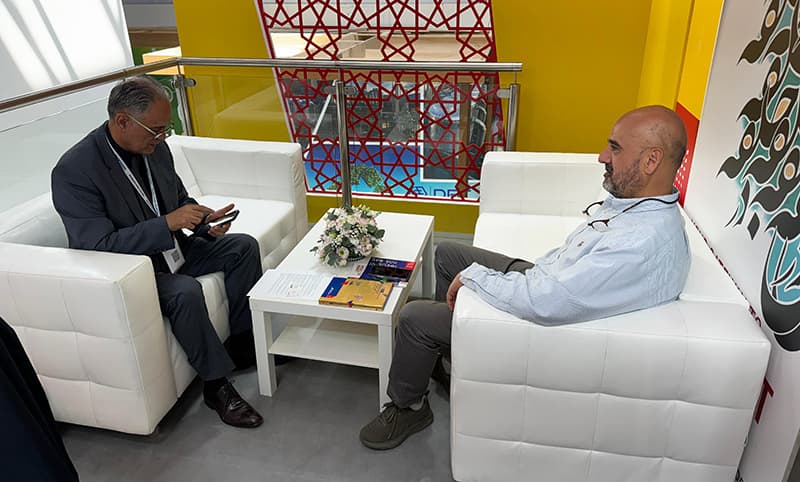In conversation with Niyazi Mehmet Sezer, General Manager, Saudi Xerox
In terms of innovation and market growth, what are your plans for the Saudi market in 2024?
Saudi Arabia is a unique market, especially with the region’s proximity to Turkey and significant government investments. This ecosystem supports a growing market. While the global printing industry has seen a 4% decline, Saudi Arabia has not experienced this drop. Last year, our market grew by around 90%, surpassing our expectations. Despite some instability this year, we anticipate continued growth.
From an innovation perspective, digital printing is declining in certain areas. Last data shows that of the three trillion pages printed worldwide, only 3-4% was printed digitally; the rest were commercial prints. Industry trends indicate a shift. While digital office printing is declining, areas like book printing are rapidly digitizing. Despite the digitization of office systems and workflows, there remains a demand for printed files and reports. Specifically, in Saudi Arabia, digital printing remains relatively stable.
Why is Xerox not participating in drupa 2024?
Xerox is in a phase of reinvention, with changes at the management level, including six new board members. Xerox has always been an innovator in the printing field, creating technologies like laser printers and facsimile machines. Despite our separation from Fujifilm, we maintain a strong business relationship, with over 90% of our product portfolio produced by Fuji, which continues to bring in new technologies.
Xerox believes that current technological advancements are fairly uniform across the industry. The focus is more on workflow integration and digitization implementation. Xerox aims to maintain 35% of its legacy while dedicating 65% to digital platforms and workflow solutions. This strategy aligns with our goal of positioning Xerox as a consultant for the printing industry and a hardware distributor, which influenced our decision not to participate in drupa 2024.
Additionally, we must consider the return on investment (ROI). As a public company, Xerox aims to meet investor expectations. Historically cash-rich and profitable, Xerox has decided to prioritize one-on-one events over large trade shows, showcasing our technologies and future investments at innovation centers in the US and the UK.
What are your reflections on this year’s drupa?
I observe an increasing presence of digital technology. It’s inevitable. In the 20th century, business strategies were akin to a chess game, requiring foresight and planning. However, the 21st century emphasizes speed, particularly in the printing industry, where digital is essential. This is the direction the entire industry is moving towards.
Based on your experience, how has drupa evolved over the years?
The turning point for drupa’s shift towards digitalization was in 2004. Although Xerox is not participating this year, I have two reasons to attend. Firstly, many of our partners are involved in the frontend and finishing sectors, and face-to-face commercial discussions are critical, especially post-COVID. Secondly, as Saudi Xerox is a joint venture with The Olayan Group, I have dual roles: as a vendor and promoter. The Olayan Group is a strong brand in Saudi Arabia, seeking complementary opportunities to expand our portfolio.
Did you have any visitors from Saudi Arabia to drupa?
Yes, we had a few customers visit. Since we do not have a stand here, I will meet them separately.
What distinguishes Xerox in terms of market strategy?
Technology is crucial, and Xerox positions itself in Saudi Arabia as a high-tech company with strong customer relationships. We work with blue-chip companies and are market leaders in government and enterprise sectors. With 3,000 customer contracts in Saudi Arabia, including 10% major contracts with ministerial services and computer solutions companies, we boast a 98% customer retention rate, with some clients partnering with us for 25 years. Our strategy involves being a trusted partner, delivering high-quality services, and expanding our portfolio.
Is sustainability a concern for your customers in Saudi Arabia, or do you have to educate them?
Sustainability has evolved from a trendy topic to a mandatory requirement. Increasingly, tenders demand sustainability certifications. Xerox aims for zero carbon levels by 2040, with over 90% of our products currently recyclable. We also engage in electronic recycling in Saudi Arabia and have initiated tree planting projects. Last year, we planted 2,023 trees in the Western Province, and this year, 2,024 trees. We strive for a sustainable planet in partnership with our customers.
What challenges does Xerox face in your region?
The primary challenge is finding and retaining talent. In Saudi Arabia, talent acquisition is difficult, but retention is even more challenging. Our workforce is nearly 50% Saudi locals, and we aim to increase this percentage. However, as the market grows rapidly, particularly with giga projects, retaining young, educated talent is crucial. Saudi Arabia is becoming expensive, with labor costs taking up nearly 80% of expenses.
Xerox is known for attractive job offers and enjoys a high job tenure rate, approximately 11.4 years. Employee satisfaction and engagement are vital, and we listen to our employees. Saudi Xerox was recognized by the Best Places to Work in 2024, following the same recognition in 2023.
Where do you see Saudi Xerox ten years from now?
Success for me means diversifying our portfolio. When I joined Saudi Xerox in 2018, software solutions, automation, and workflow comprised only 2% of our business. By the end of 2024, we expect this to reach around 12%, aligning with Xerox’s global direction. In the next five years, I anticipate one-third of our income will come from digital services. However, our main strength remains our robust customer relationships.
